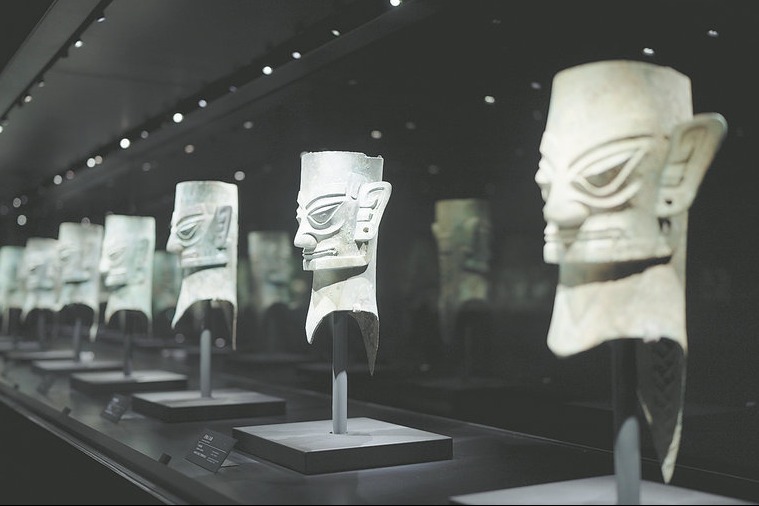BRI boosts cooperation with Latin America
By Yang Zhimin | China Daily | Updated: 2018-11-29 07:44

Since the beginning of the 21st century, economic and trade relations between China and Latin America have seen constant, stable development. Latin America has become one of the most dynamic regions for China's trade cooperation. According to statistics from the United Nations Economic Commission for Latin America and the Caribbean, China has been the second-largest partner in goods trade, third-largest export market and the second-largest source of imports for Latin America since 2014.
Latin America is also the second-largest market for China's overseas investment. By the end of 2017, the stock of China's direct investment in Latin America had exceeded $200 billion. And more than 2,000 Chinese companies have invested in Latin American countries, creating more than 1.8 million jobs there.
The prosperous economic and trade cooperation between China and Latin America can be attributed to the complementarity in terms of resource endowment and economic structure, as well as to the great importance the two sides attach to each other at a strategical level. The two sides have also established a series of arrangements, from cooperative mechanisms and platforms to specific measures, which fundamentally guarantee the stability and upgrading of China-Latin America economic and trade cooperation.
In 2008, the Chinese government issued the first policy paper on Latin America and the Caribbean, providing a sound basis for the development of two-way relations. The second policy paper released in 2016 further expounded on the new ideas, proposals and measures toward Latin America and the Caribbean, in order to upgrade the relations to a comprehensive partnership of cooperation.
So far, 24 of the 33 Latin American and the Caribbean countries have established diplomatic relations with China. Among them, many are comprehensive strategic partners or strategic partners of China, as well as China's cooperative partners in multilateral mechanisms such as G20, Asia-Pacific Economic Conference and BRICS, as well as in South-South cooperation and the rule-based global trade system.
Since the Belt and Road Initiative was proposed five years ago, it has been expanding the width and depth of China-Latin America cooperation. In May 2017 when the first Belt and Road Forum for International Cooperation was held, the Chinese government said Latin America and the Caribbean are the natural extension of the 21st Century Maritime Silk Road. In February 2018, the second Ministerial Forum of China and the Community of Latin American and Caribbean States released a special announcement on the Belt and Road Initiative.
So far, seven Latin American and Caribbean countries have been prospective members of the Asian Infrastructure Investment Bank, and 14 have signed memorandums of understanding with China on Belt and Road cooperation.
Boosted by the Belt and Road Initiative, cooperation between China and Latin American countries entered a new stage of integrative, comprehensive cooperation that could be called"1+3+6": one plan refers to the Sino-Latin American and Caribbean Cooperation Plan (2015-2019); three driving forces of trade, investment and financial cooperation; and six sectors of energy and resources, infrastructure building, agriculture, manufacturing, scientific and technological innovation, and information technologies.
At the same time, a new mechanism on production capacity has been established, which focuses on three sectors that are key to interconnection-logistics, electricity and information, with integrated efforts from enterprises, society and government. And the financing channels have been expanded to development funds, credit, loan and insurance.
China also introduced substantial measures, including setting up the Fund for China-Latin American and the Caribbean Cooperation, special loan for infrastructure projects, special-purpose loans, and preferential loans for agricultural cooperation.
Looking into the future, economic and trade cooperation between China and Latin America and the Caribbean has very good prospects. China has huge market demand and outbound investment capacity. It is estimated to import as much as $2 trillion of commodities from countries and regions involved in the Belt and Road Initiative in the next five years. And the first Chinese International Imports Expo, held in Shanghai early this month, could lead to negotiations on free trade zones and increasing imports to China.
On the other hand, Latin America and Caribbean countries lack modern infrastructure. According to the Latin American Development Bank, the accumulative investment in airport construction in Latin America is expected to reach $53.15 billion by 2040, to meet the surging demands of tourists that increase at an average rate of 8 percent.
Currently the economies and policies in Latin American and Caribbean countries are undergoing drastic changes and adjustments. Which is expected to give impetus to further innovation of the cooperation model between China and Latin America and the Caribbean.
The author is a research fellow at the Institute of Latin American Studies, Chinese Academy of Social Sciences. He contributed this article to China Watch, a think tank powered by China Daily.
























